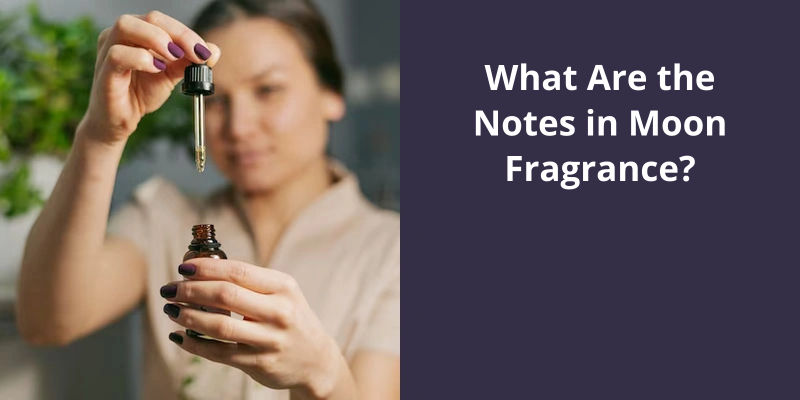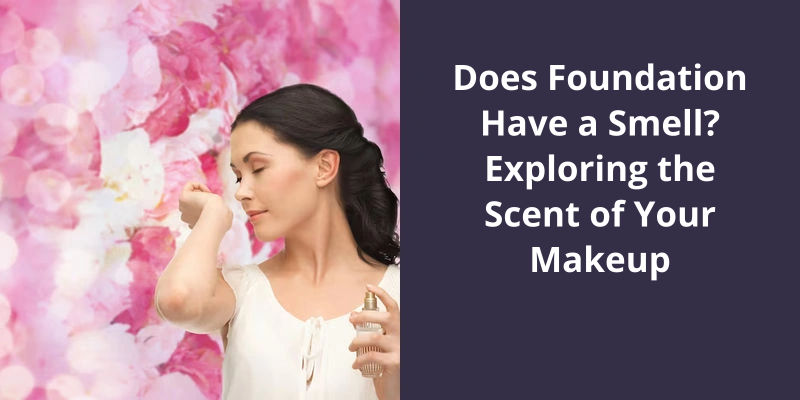One of the most fascinating aspects of human curiosity is the desire to replicate and recreate the sensory experiences that surround us. While we’ve made significant advancements in replicating visual and auditory stimuli, the replication of smells has proven to be a much more complex and challenging endeavor. Smells elicit powerful emotions and memories, yet capturing and replicating them in a controlled and precise manner has remained elusive. By analyzing the molecular composition of various scents and conducting sensory tests, scientists have been able to successfully recreate the smells of certain essential oils. This breakthrough has sparked a new wave of exploration and inquiry into the possibilities of replicating a wide range of smells. As we delve deeper into this fascinating realm, the question arises: Can you truly replicate a smell?

Can You Capture a Scent in a Jar?
Can you capture a scent in a jar? It’s a fascinating question that raises the curiosity of many. While there are a number of methods for capturing a smell, they all seem to fall short compared to the precision and accuracy of capturing a photograph. One method involves storing the air in a jar, but this approach is often impractical. The concentration of volatiles in the jar is usually very low, and when the jar is opened, the molecules quickly diffuse out, diminishing the captured scent.
Another approach to capturing a scent is by using absorbent materials such as paper or fabrics. These materials have the ability to absorb and retain certain molecules from the air, allowing you to experience the smell even after the original source is removed. However, this method isn’t foolproof, as the scent can degrade over time, and the captured molecules may mix with other smells, altering the original aroma.
Some enthusiasts have experimented with distillation techniques in an attempt to replicate a scent. By heating the source material and condensing the vapor, they hope to recreate the smell in a more concentrated form. Although this method can yield some success, it requires precise control and knowledge of the volatile compounds present in the scent, making it a complex and challenging process.
Another interesting method is through the extraction of essential oils from plants or other aromatic sources. These oils contain concentrated amounts of the scent molecules and can be bottled or stored in small vials. While this approach allows for a more tangible representation of a scent, it still lacks the full complexity and intricacy that the original smell possesses.
Ultimately, capturing a scent in it’s entirety and replicating it perfectly remains a significant challenge. While various methods have been explored and developed, all of them have their limitations, whether it’s the diffusion of molecules, degradation over time, or the inability to capture the full complexity of a scent.
The Role of Scent in Memory: Why Do Certain Smells Trigger Vivid Memories?
- The sense of smell plays a crucial role in memory recall
- Scents have the power to evoke strong and vivid memories
- Memory is closely linked to emotions, and scent can be a powerful emotional trigger
- Research suggests that smell is closely linked to the brain regions responsible for memory and emotion
- Smells can transport us back in time and make us relive past experiences
- Certain smells are often associated with specific memories or periods in our lives
- Scent can enhance learning and memory retention
- Smell is considered one of the oldest and most primal senses
- Exploring the role of scent in memory can lead to a better understanding of human cognition
- Scientists and researchers continue to study the complex relationship between scent and memory
Despite the relatively weaker sense of smell compared to many animals, humans possess a remarkable ability to detect and recognize a wide range of scents. In fact, our olfactory system allows us to identify thousands of different smells, often even in minuscule amounts. This extraordinary skill speaks to the intricate complexity and sensitivity of our nasal receptors, enabling us to navigate and interact with the world through the power of scent.
Can Humans Pick Up Scents?
Our sense of smell is closely linked to our memory and emotions, often triggering vivid recollections of long-forgotten moments. But can humans replicate a smell? While we may not possess the ability to create an exact replica of a scent, we can certainly come close.
One fascinating aspect of our olfactory system is it’s ability to distinguish and identify thousands of different smells. We’re capable of detecting odours even in the tiniest quantities, showcasing the sensitivity of our noses. This sensitivity allows us to pick up on the subtlest nuances, from the floral notes of a jasmine flower to the earthiness of freshly cut grass.
However, replicating a specific smell with precision is a complex task. Our noses may be adept at identifying scents, but attempting to recreate them is challenging. Many smells are a result of a combination of various volatile compounds, each contributing to the overall aroma. Recreating this intricate mix of molecules accurately requires sophisticated equipment and know-how.
That said, humans have found ways to mimic certain scents with varying degrees of success. Perfumers, for instance, use a combination of natural and synthetic aromatic ingredients to create fragrances that resemble specific scents. By carefully blending different compounds, they can capture the essence of a flower or a particular fruit.
The smell of baking bread may transport us back to our childhood, triggering a flood of nostalgic memories. These associations highlight the power of our olfactory system and it’s profound impact on our perception of the world.
Our noses may not possess the precision of a laboratory machine, but they possess the remarkable capacity to enhance our lives through the power of scent.
The Process of Creating Fragrances and Perfumes
- Gathering natural or synthetic ingredients for the fragrance
- Researching and studying the desired scent profile
- Creating a formula or recipe for the fragrance
- Measuring and weighing the ingredients accurately
- Mixing and blending the ingredients together
- Allowing the fragrance mixture to mature and develop
- Testing the fragrance on sample strips or human volunteers
- Making necessary adjustments to the formula based on feedback
- Filtering and clarifying the fragrance mixture
- Bottling and packaging the finished perfume
- Labeling the perfume with information and branding
- Distributing the perfume to stores or customers
Humans detect smells by inhaling air that contains odor molecules. These molecules then bind to receptors inside the nose, which relay messages to the brain, allowing us to perceive and identify different odors. Understanding this process sheds light on how fragrances and odors travel from their source to our noses, offering fascinating insights into the science of smell.
How Does an Odor Get From a Source to Your Nose?
Odor replication is a fascinating field that aims to understand and recreate the complex process of smell perception. To comprehend how an odor gets from it’s source to our nose, we must delve into the intricacies of this olfactory journey. It all begins with the release of odor molecules into the environment. These molecules can originate from various sources, such as flowers, food, or even volatile chemicals.
Once these odor molecules are released, they travel through the air, propelled by natural diffusion or other mechanisms. As we breathe, a small portion of the ambient air laden with odor molecules is drawn into our nasal passages. Interestingly, the human olfactory system is highly sensitive, able to detect even minute amounts of these molecules, sometimes in the parts per billion range.
Once inside our nose, these odor molecules come into contact with specialized receptor cells within the olfactory epithelium. These olfactory receptors can recognize a vast array of odor molecules, each with a specific shape and chemical structure. When an odor molecule binds to a receptor, it triggers a biochemical response, setting off a cascade of events that ultimately result in the generation of electrical signals.
These electrical signals are then transmitted along the olfactory nerve fibers to the olfactory bulb, which is part of the brain responsible for processing smells. Within the olfactory bulb, these signals are further processed, leading to the identification and interpretation of the specific smell. It’s crucial to note that different combinations and concentrations of odor molecules create distinct smells, enabling us to perceive a wide spectrum of scents in our environment.
Our brain intricately associates these smells with memories, emotions, and even behavioral responses, adding another layer of complexity to the overall olfactory experience. Although significant progress has been made in this field, complete replication remains a challenge due to the sheer complexity and diversity of smells in our world.
Nevertheless, advancements in technology and scientific understanding continue to push the boundaries of olfactory replication. From creating artificial noses to developing scent-based virtual reality experiences, scientists and researchers are relentlessly exploring new avenues to realize the full potential of replicating smells. Despite the challenges ahead, the quest to replicate smells holds immense promise, not just in enhancing our sensory experiences, but also in areas such as healthcare, food, and environmental safety.
The Use of Smell in Healthcare Treatments and Diagnostics
Smell plays an important role in healthcare treatments and diagnostics. Researchers are exploring it’s potential to replicate a wide range of smells for various purposes. By replicating smells, it’s possible to create scents that can trigger memories or evoke specific emotional responses, which can be beneficial for therapy and mental health treatments.
Moreover, in the field of diagnostics, certain diseases and conditions have distinct smells associated with them. Researchers are working on developing electronic noses that can detect specific odors in breath or bodily fluids, potentially allowing for non-invasive and early detection of diseases like cancer or infections.
Additionally, smell can be used as a diagnostic tool in identifying disorders such as anosmia (loss of smell), which often indicates underlying health issues. By understanding the sense of smell and it’s implications, healthcare professionals can gather valuable information about a patient’s overall health and well-being.
While replicating complex smells accurately is still an ongoing challenge, advancements in technology and research offer promising possibilities for harnessing the power of smell in healthcare to improve diagnostics and enhance therapeutic treatments.
Source: Human Nose Can Detect a Trillion Smells | Science | AAAS
The intriguing concept of imagining a smell and actually experiencing it’s captivated researchers who’ve discovered compelling evidence that the olfactory center of the brain is activated during such mental olfaction. This finding suggests that the potential to perceive scents through imagination exists within us, awaiting development through dedicated practice and enhancement techniques.
Can You Imagine a Smell and Smell It?
Can you imagine a smell and actually smell it? It may sound like an impossible task, but recent studies have provided some intriguing insights into this phenomenon. According to these studies, there’s evidence to suggest that the olfactory center of the brain becomes activated when individuals imagine odors. This finding raises the exciting possibility that our brains do possess the ability to replicate smells, albeit one that may require practice to enhance.
The olfactory center, responsible for processing smells, appears to play a crucial role in the imaginative representation of scents. This suggests that the brain has the potential to mimic the experience of smelling something without any physical stimuli present. However, it’s important to note that the current evidence points to this ability being more of a learned skill that can be improved with practice, rather than something that everyone can effortlessly tap into.
These findings have significant implications, especially for those in fields that heavily rely on smell. For instance, perfumers could potentially enhance their ability to create new scents by honing their imagination of different aromas. Additionally, individuals who’ve lost their sense of smell due to injury or illness might benefit from exercises aimed at reactivating the olfactory center and improving their ability to imagine scents.
The Role of the Olfactory Center in Processing Smells: Discuss the Functions of the Olfactory Center in More Detail, Including It’s Role in Identifying and Processing Different Smells.
The olfactory center, also known as the olfactory bulb, plays a crucial role in processing smells. Located in the brain, this center is responsible for detecting and analyzing odors that we experience. It receives signals from olfactory receptor neurons located in our nose and transfers those signals to other parts of the brain for further processing.
One of the main functions of the olfactory center is to help us identify different smells. It’s the remarkable ability to differentiate between thousands of different odors, allowing us to recognize various scents in our environment. This process involves the activation of specific neural pathways within the olfactory center, which enables us to distinguish between the smell of a flower, the aroma of freshly baked bread, or the fragrance of a perfume.
Additionally, the olfactory center is involved in processing and interpreting the emotional and memory-related aspects of smells. Certain odors can evoke powerful emotions and trigger memories from the past. This is because the olfactory center is closely connected to the limbic system, which is responsible for processing emotions and memory formation.
In summary, the olfactory center plays a vital role in our sense of smell. It helps us identify and differentiate between various odors, and also contributes to the emotional and memory-related aspects of our olfactory experiences.
I ensure utmost precision and accuracy by employing specialized equipment and a vast collection of reference odors. By utilizing an alembic and rotary evaporator, I’m able to extract and distill substances, removing solvents to achieve the desired scent. As I meticulously measure the chemicals with precise scales, my collection of 3,000–4,000 reference odors fuels my ability to recreate smells with remarkable fidelity. These carefully maintained liquid chemicals are housed in a dedicated room, carefully regulated at 14 °C to preserve their integrity.
How Do You Recreate Smell?
Recreating smells is a fascinating process that requires specialized tools and knowledge. One method I use involves the utilization of an alembic or distillation apparatus. This device allows me to extract the desired substances from various sources, such as plants or other organic materials. By carefully controlling the temperature and pressure within the apparatus, I can obtain the aromatic compounds responsible for the desired smell.
Once the substances are extracted, I employ a rotary evaporator to remove any solvents that were used during the extraction process. This step ensures that only the pure aromatic compounds remain, enhancing the accuracy and authenticity of the recreated smell.
The precise measurement of chemicals is of utmost importance in my work. I rely on very accurate scales to weigh the aromatic compounds, ensuring that the correct proportions are used during the recreation process. It’s crucial to maintain the exact balance of these chemicals to capture the essence of the desired scent, as even the slightest variation can greatly alter the final result.
To aid my work, I’ve an extensive archive of reference odours. This collection includes approximately 3,000 to 4,000 distinct smells, each carefully categorized and documented. These references serve as a valuable resource when attempting to recreate a specific scent, as they provide a point of comparison and help me refine the composition until it matches the desired fragrance.
To preserve the longevity and quality of the chemicals, I store them in a separate room kept at a constant temperature of around 14 °C. This controlled environment safeguards the delicate molecules and ensures that they remain stable and potent over time. By maintaining these chemicals in liquid form, I can easily access and utilize them in the recreation process.
By utilizing distillation apparatus, removing solvents, measuring chemicals accurately, and relying on an archive of reference odours, I’m able to replicate a wide range of scents. This meticulous and scientific approach enables me to capture the essence of various smells and bring them to life.
The Science of Smell: Delve Into the Biology and Chemistry of Olfaction, Including the Processes Involved in Detecting and Processing Smells in the Brain.
The sense of smell, also known as olfaction, is a fascinating and complex process that allows us to detect and process different scents. It involves both biology and chemistry, working together seamlessly to enable us to experience the world of aromas.
Our olfactory system starts with the nose, where specialized receptor cells called olfactory sensory neurons are located. These neurons have tiny hair-like structures called cilia, which can detect odorous molecules present in the air. When we inhale, these molecules enter our nasal passages and come into contact with the cilia.
Once the odor molecules bind to the cilia, they trigger a cascade of chemical reactions, ultimately generating an electrical signal. This signal is sent to the olfactory bulb, a structure located at the base of the brain responsible for processing smells.
In the olfactory bulb, the electrical signals are received and transformed into patterns of neural activity. This pattern is then transmitted to other areas of the brain, such as the olfactory cortex, where the information is analyzed and interpreted. It’s in these brain regions that smells are identified and associated with specific memories, emotions, or experiences.
Interestingly, smells can be incredibly powerful triggers for memories, often evoking vivid recollections of past events. This is because the olfactory system is closely connected to the brain regions responsible for memory and emotion.
While scientists have made significant strides in understanding the intricacies of the sense of smell, replicating a smell exactly remains a daunting challenge. Smells are composed of complex mixtures of different odor molecules, each with their own unique chemical properties. Recreating the precise combination and concentration of these molecules to reproduce a specific smell is extremely difficult.
Nevertheless, scientists continue to explore the possibilities of replicating smells through various technologies, such as electronic noses and artificial olfactory systems. These advancements may enable us to recreate certain smells in the future, opening up incredible opportunities in areas such as virtual reality, medicine, and even the food industry.
Conclusion
However, recent advancements in technology and understanding have shown promising results. Using mass spectra analysis, researchers have been able to identify twenty odor components that contribute to the overall scent of essential oils. This groundbreaking discovery opens up a realm of possibilities, from creating realistic synthetic fragrances to preserving and recreating cherished scents from the past. As humans have always been driven by curiosity, the quest to replicate smells not only satisfies our innate desire for knowledge but also has the potential to revolutionize various industries and enhance our understanding of the world around us.





